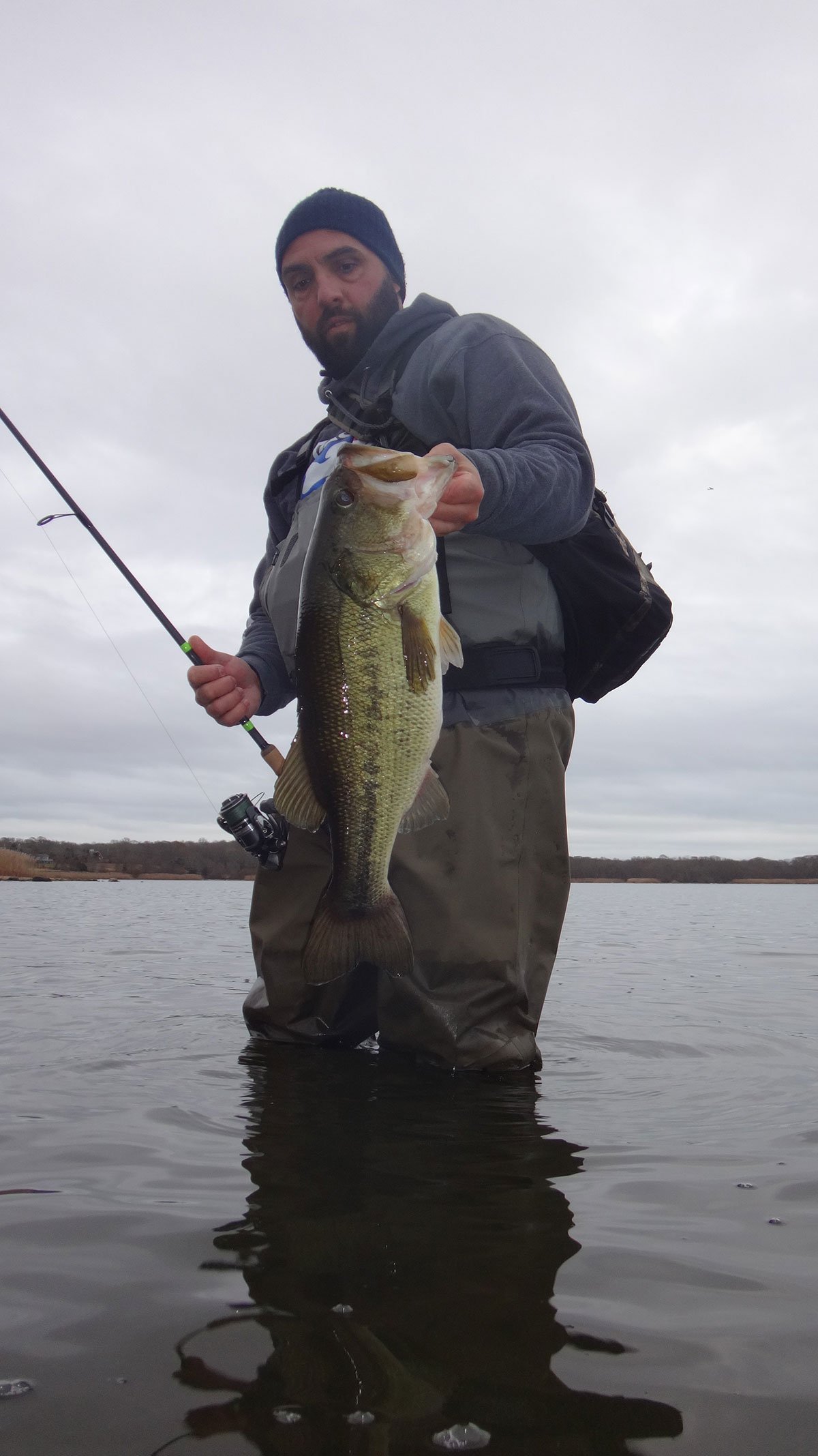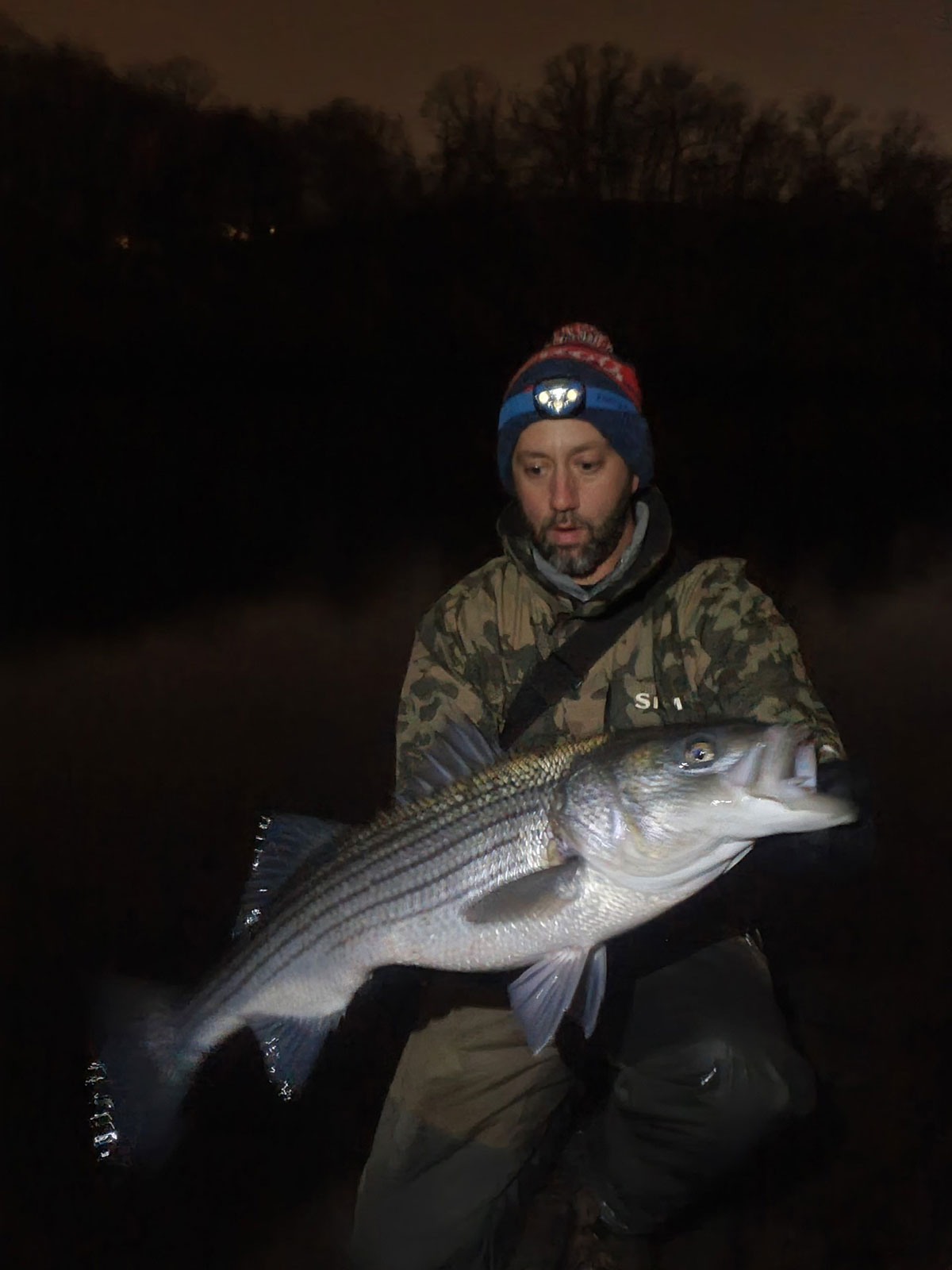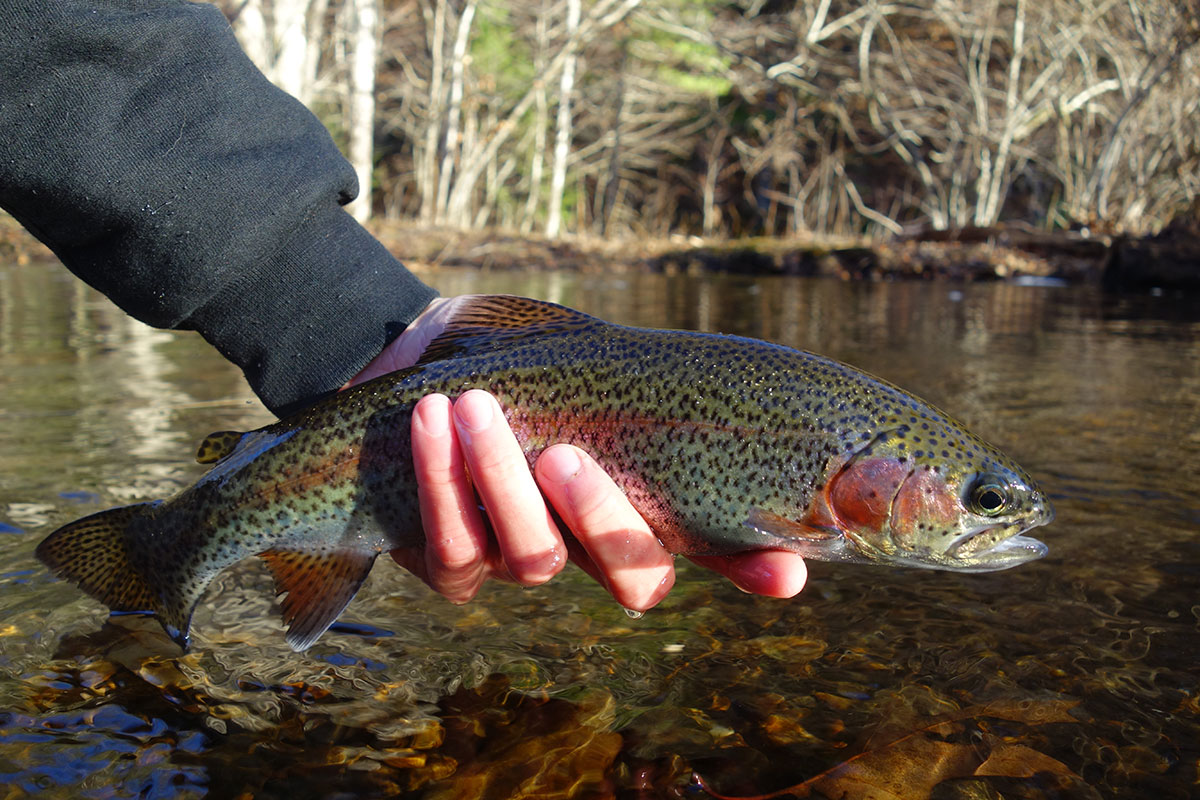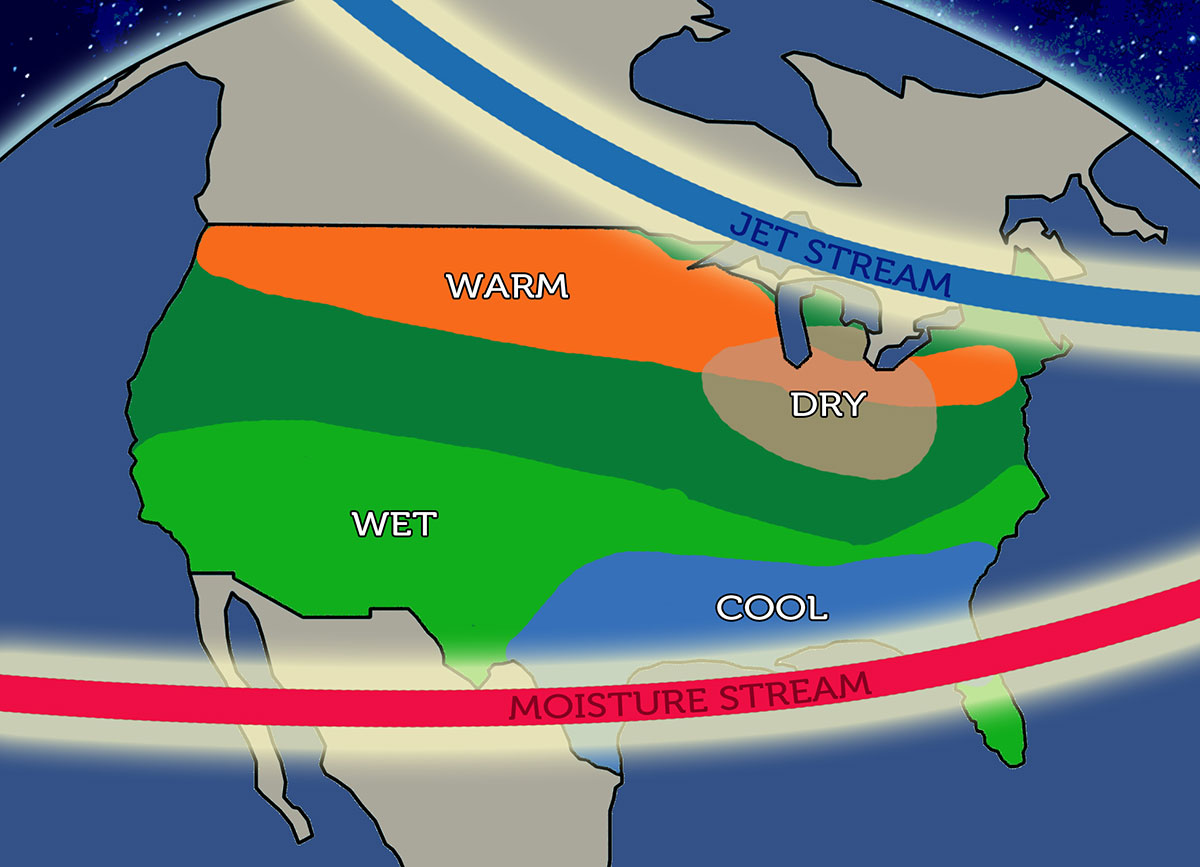
Just what does an El Niño winter mean for fishing in the Northeast?
Northeast winters sure aren’t what they used to be and as unnerving as the potential implications of this may be, it does open up many possibilities for anglers across the region that want to bend the rod 12 months per year.
Data show that winter temps have risen by an average of 4 degrees since 1970 in the Northeast. That doesn’t seem like a lot, but that fact alone doesn’t tell the whole story; the past nine December-through-February seasons have all made the top 10 all-time list of warmest Northern Hemisphere meteorological winters. And the coming winter just might make it a clean sweep.
El Niño?
Meteorologists are forecasting an El Niño winter, a phenomenon that arises when ocean temperatures are higher than normal off the west coast of South America. It’s hard to fathom that water temps in an ocean a quarter of the way around the world can affect our winters, but it can. El Niño was named by Peruvian fishermen back in the 1800’s who noticed that periodic spikes in water temperature off their coast were changing currents and dramatically reducing their catch rates. This phenomenon would arise every 5 to 7 years and would usually begin around Christmas; the phrase ‘el niño’ translates to ‘the boy’ in English, but when capitalized, El Niño translates to ‘Christ Child,’ and with Christmas commemorating the arrival of Christ and coinciding with these periodic water changes, the phenomenon earned its name.
The basics of the El Niño setup are that the steadiest stream of moisture tends to flat-line and run straight across the southern United States. The jet stream, tends to push well to the north, allowing warmer air from the south to spill into the Midwest and Northeast. Unfortunately for us, that southern stream of moisture can feed the formation of Atlantic low pressure systems that can turn into major Nor’easters when the jet stream allows. There’s another El Niño phenomenon known as ‘high latitude blocking’ that sets the stage for these major weather events.
High latitude blocking happens when a big high pressure is stationed over Greenland and the jet stream basically backs up behind it. If you can picture the jet stream like a long piece of rope floating in water and picture what would happen if that rope were flowing along in a gentle current and it suddenly encountered an obstacle. The rope would start to stack up in a widening ‘s’ pattern behind the obstruction, yes? Well, the same thing happens to the jet stream and when one of these loops allows artic air to leak into the Northeast and coincides with a disturbance moving north from the Carolinas, it opens the door for a Nor’easter to barrel up the coast.
A mild and mostly dry winter with some intense storms is basically what we can expect from El Niño along the Northeast Coast, but what does that mean for the fishing? Well, it depends on what you want to fish for…

Winter Stripers
One of the fisheries that will benefit the most from an El Niño winter is holdover striper fishing. A mild and wet winter may keep the stripers from going into torpor, a state of inactivity brought on by low water temperatures. Holdover fanatics know all too well the frustration that comes from fishing over a dense school of stripers that just will not bite. During cold winters, bite windows are sometimes no longer than 15 minutes, usually coinciding with a tide change or a daylight change. During warmer winters though, these periods of inactivity are shorter or may not factor in at all and even February – which is typically the toughest month to land a striped bass – can produce excellent results.
The other half of the El Niño equation is precipitation; in the Northeast these winters are typically drier, but when it rains or snows, it tends to be a bigger event. This is usually a good thing for holdover striped bass fishing. As rain and snow falls, it increases the flow inside the river which results in more baitfish being washed out of tributaries, over dams and out of adjacent ponds kicking the typical sluggish winter bite into overdrive. Anglers who bundle up and brave the advent of the storm are often rewarded with the best fishing and the biggest fish. However, the increased bite can last for days if the water doesn’t become too dirty, so don’t feel like you have to channel your inner Jim Cantore if you’re not up for it.
Snowstorms can produce a ‘second wind’ of sorts, during these warmer El Niño winters where the snow piles up and then rapidly melts a few days later when temperature climb back above freezing, adding another dose of fresh runoff to the situation. It’s during these times when anglers would be well-advised to try fishing some larger offerings, you just might be surprised by the size of the fish you catch.

Coldwater Largemouths
Largemouth bass are some of my favorite fish to chase during the saltwater ‘offseason’ and I feel like even the hardcore freshwater guys don’t put much time into hunting these awesome and aggressive fish in the winter. A warmer winter – at face value – means largemouths will be more active and more aggressive; but don’t mistake this to mean that they’ll be chasing down Whopper Ploppers at sunset in January like they do in July. Most of the time, finesse applications will score best during the winter. My three favorite baits are suspending jerkbaits, Ned Rigs and Jigs. On a typical mild winter day, I will start with a jerkbait and if the bite isn’t turning on, I’ll try to fish tight to structure, or on mid-depth flats with the Ned Rig. I’ll admit that much of this winter fishing is more about catching fish than it is chasing a giant, but that all changes with the weather.
I’ll be keeping a close eye on the radar and five-day forecasts, because the approach of a big winter storm or Nor’easter can open up the opportunity for a ferocious bite with the possibility of a true monster. On the day before and the day of a major winter storm, the bite often goes berserk! These amazing bites will only be more intense thanks to the typically mild temps of an El Niño winter. One of my favorite winter largemouth memories came back in 2018; I was fishing the day before a powerful cold front and major winter storm were set to hit the area. It was January 4th and the weather was mild, right around 50 degrees. My friend Dave Daluz and I were tossing jerkbaits at a location we call ‘the winter spot’ – a steep rocky edge that abuts the deepest water in the lake. From 1 p.m. until dark, we crushed fish from 1 to 5 pounds—we ended the session with more than 50 fish landed between us. The next day, we had over a foot of snow, and the lake was completely frozen over! For this winter’s largemouth fishing, this should be your mantra: ‘the deeper the low, the crazier the fishing’.
Timing Trout
For the trout end of the spectrum I called upon my friend and master angler Rowan Lytle, because I knew he’d have deeper insights than I could provide, here’s what he said: “El Niño conditions certainly have notable impacts on trout fishing. As an angler that logs most seasons, I’ve got the advantage of having written data and photos to go back to. The last strong El Niño was the winter of 2015-2016: December was quite mild overall, even providing some open water and stillwater fishing. Some rainfall events resulted in productive fishing for post spawn wild trout in some small streams with eggs and streamers.”
Lytle continued, “January brought a few shots of cold and snow that made fish lethargic, but still fit the warmer-than-average trend as evidenced by numerous photos of angling partners wearing little more than jeans and hoodies and fishing small brook trout streams with dry flies. February then continued the freeze thaw cycle with a few significant snowfalls and short cold spells that built shelf ice and significantly slowed the fishing on most freestone streams before shots of warmth or rain blew the ice out again and got the fish in an active mood. In essence, it seems an El Niño winter in the Northeast means a trout fisherman can expect some very mild spells with a few wrenches thrown in; plan for a few gnarly cold fronts or snow machine Nor’easters. Those rough spells will likely be short-lived though, and even those who are keen to catch their trout with a dry fly can expect mild periods to provide midge, olive, caddis, and winter stonefly hatches that will bring trout to the surface in the warmer than normal temperatures. By contrast, those that seek their trout on the ice may be left wanting more as periods of safe ice, especially south of Massachusetts or even Vermont, may be very brief (something we’re all becoming familiar with anyway).”

Beyond the Winter
One of the things I’m looking the most forward to, thanks to another mild winter, is another early striped bass season. Last winter (2022-2023) was neither El Niño nor La Niña, but the winter was incredibly mild and pretty much the entire East Coast enjoyed an early run of striped bass. Up here in the Northeast, we had 40-pound stripers in Narragansett Bay before May 1, that’s the first time I’ve ever seen that happen. And there were reports of 30- and 40-pound stripers in the Cape Cod Canal starting on May 5, that’s the earliest I’ve ever seen that as well!
I checked in with my New Jersey counterpart Jim Hutchinson, Jr. about the timing of the spring run in New Jersey and he said, “Looking back at our North Jersey fishing reports, we started seeing the first slug of quality stripers in the Raritan sometime in mid-March of 2023, with 40- and even 50-pound spawning class stripers on the feed by the time the first of April arrived. Not sure where those Raritan and Delaware spawners spend the winter months, but they were on the move and getting caught and released around the first official day of spring in 2023.” Hutchinson added that holdover striper fishing in the back bays and rivers of New Jersey are closed to striper fishing in January and February, which is why the March 1 opener there is so reminiscent of the opening day of trout season.
So, what manifested as a detriment to the fishing off the coast of South America all those years ago can actually be a positive for those of us fishing El Niño winters on the northern Atlantic Coast. A warmer, drier winter can be expected overall, with some real bomber winter storms mixed in. This scenario sets us up for angling success across many species – including some not listed. Enjoy your El Niño!




